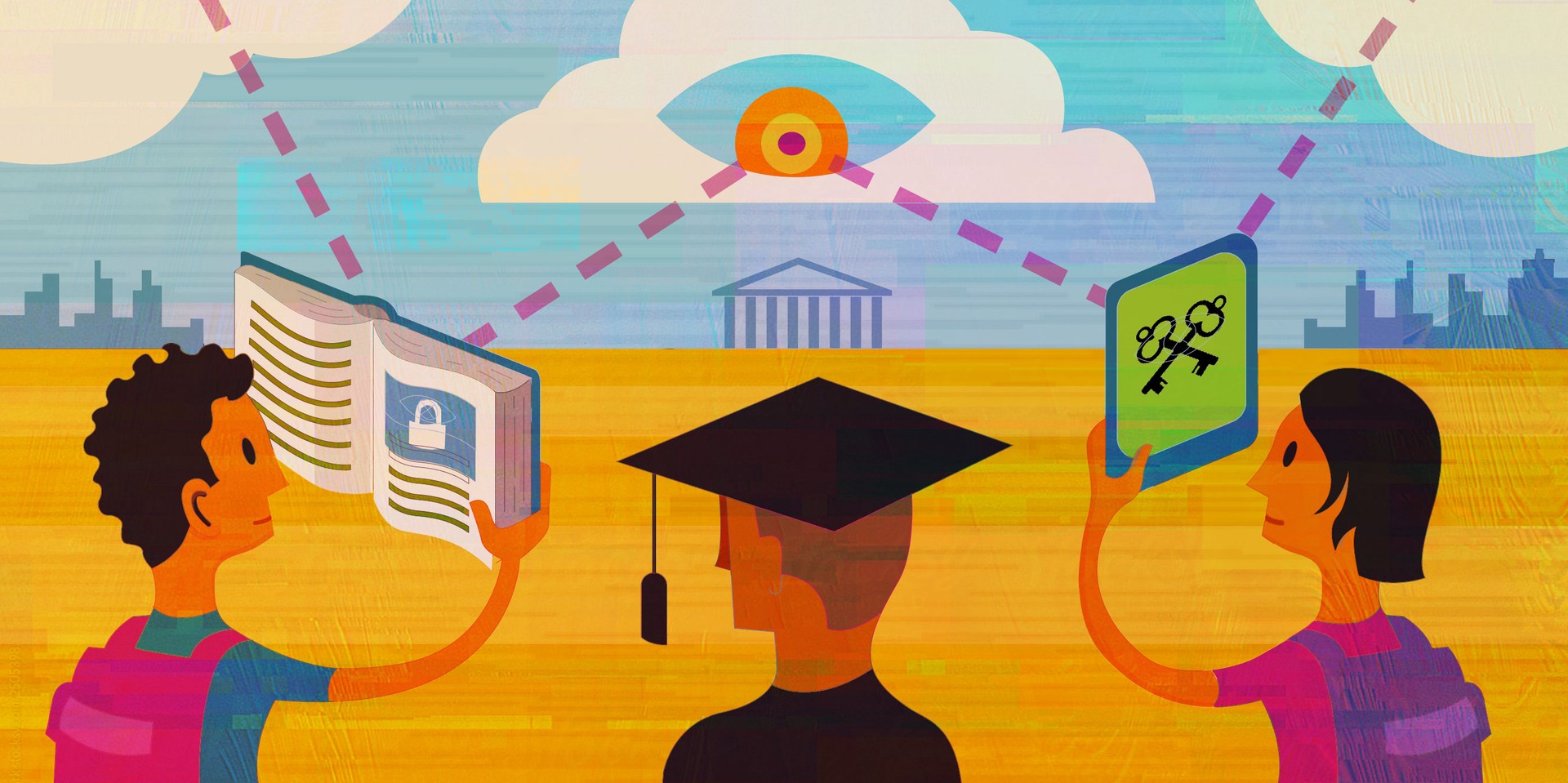 By Dave Maass
By Dave Maass
Hailey Rodis, a student at the University of Nevada, Reno Reynolds School of Journalism, was the primary researcher on this report. We extend our gratitude to the dozens of other UNR students and volunteers who contributed data on campus police to the Atlas of Surveillance project.
It may be many months before college campuses across the U.S. fully reopen, but when they do, many students will be returning to a learning environment that is under near constant scrutiny by law enforcement.
A fear of school shootings, and other campus crimes, have led administrators and campus police to install sophisticated surveillance systems that go far beyond run-of-the-mill security camera networks to include drones, gunshot detection sensors, and much more. Campuses have also adopted automated license plate readers, ostensibly to enforce parking rules, but often that data feeds into the criminal justice system. Some campuses use advanced biometric software to verify whether students are eligible to eat in the cafeteria. Police have even adopted new technologies to investigate activism on campus. Often, there is little or no justification for why a school needs such technology, other than novelty or asserted convenience.
In July 2020, the Electronic Frontier Foundation and the Reynolds School of Journalism at University of Nevada, Reno launched the Atlas of Surveillance, a database of now more than 7,000 surveillance technologies deployed by law enforcement agencies across the United States. In the process of compiling this data we noticed a peculiar trend: college campuses are acquiring a surprising number of surveillance technologies more common to metropolitan areas that experience high levels of violent crime.
So, we began collecting data from universities and community colleges using a variety of methods, including running specific search terms across .edu domains and assigning small research tasks to a large number of students using EFF’s Report Back tool. We documented more than 250 technology purchases, ranging from body-worn cameras to face recognition, adopted by more than 200 universities in 37 states. As big as these numbers are, they are only a sliver of what is happening on college campuses around the world.
Technologies
- Body-worn cameras
- Drones
- Automated License Plate Readers
- Social Media Monitoring
- Biometric Identification
- Gunshot Detection
- Video Analytics
Download the Atlas of Surveillance dataset as a CSV.
Technologies
Body-worn cameras
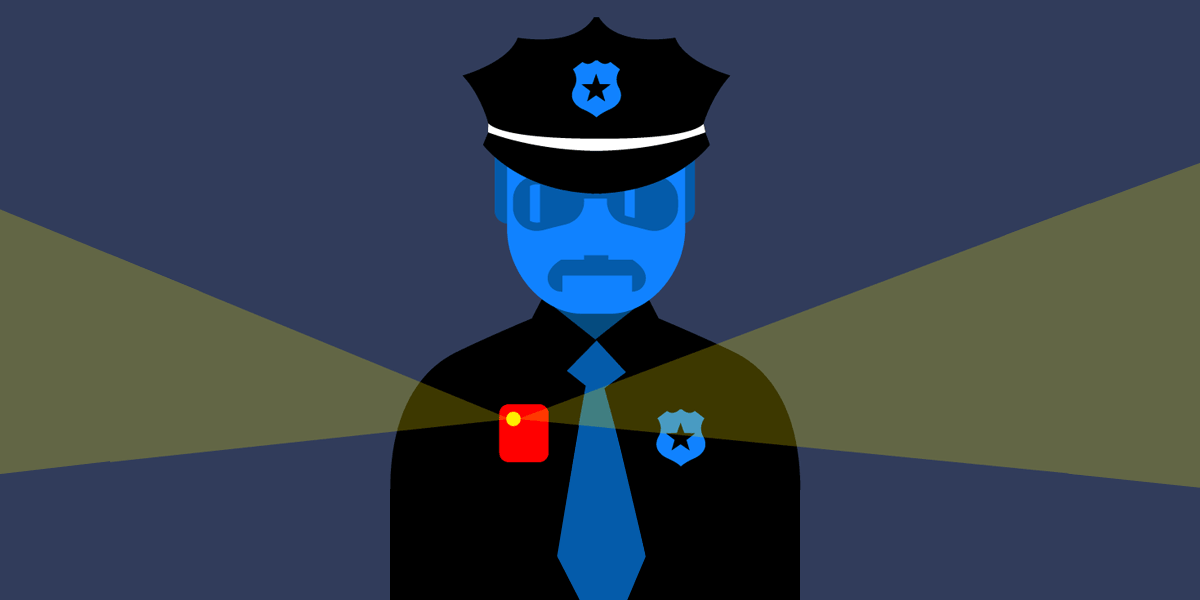
Maybe your school has a film department, but the most prolific cinematographers on your college campus are probably the police.
Since the early 2010s, body-worn cameras (BWCs) have become more and more common in the United States. This holds true for law enforcement agencies on university and college campuses. These cameras are attached to officers’ uniforms (often the chest or shoulder, but sometimes head-mounted) and capture interactions between police and members of the public. While BWC programs are often pitched as an accountability measure to reduce police brutality, in practice these cameras are more often used to capture evidence later used in prosecutions.
Policies on these cameras vary from campus to campus—such as whether a camera should be always recording, or only during certain circumstances. But students and faculty should be aware than any interaction, or even near-interaction, with a police officer could be on camera. That footage could be used in a criminal case, but in many states, journalists and members of the public are also able to obtain BWC footage through an open records request.
The Ultimate Privacy Laptop and Phones from Purism (Ad)
Aside from your run-of-the-mill, closed-circuit surveillance camera networks, BWCs were the most prevalent technology we identified in use by campus police departments. This isn’t surprising, since researchers have observed similar trends in municipal law enforcement. We documented 152 campus police departments using BWCs, but as noted, this is only a fraction of what is being used throughout the country. One of the largest rollouts began last summer when Pennsylvania State University announced that police on all 22 campuses would start wearing the devices.
One of the main ways that universities have purchased BWCs is through funding from the U.S. Department of Justice’s Bureau of Justice Assistance. Since 2015, more than 20 universities and community colleges have received funds through the bureau’s Body-Worn Camera Grant Program established during the Obama administration. In Oregon, these funds helped the Portland State University Police Department adopt the technology well ahead of their municipal counterparts. PSU police received $20,000 in 2015 for BWCs, while the Portland Police Department does not use BWCs at all (Portland PD’s latest attempt to acquire them in 2021 was scuttled due to budget concerns).
Drones
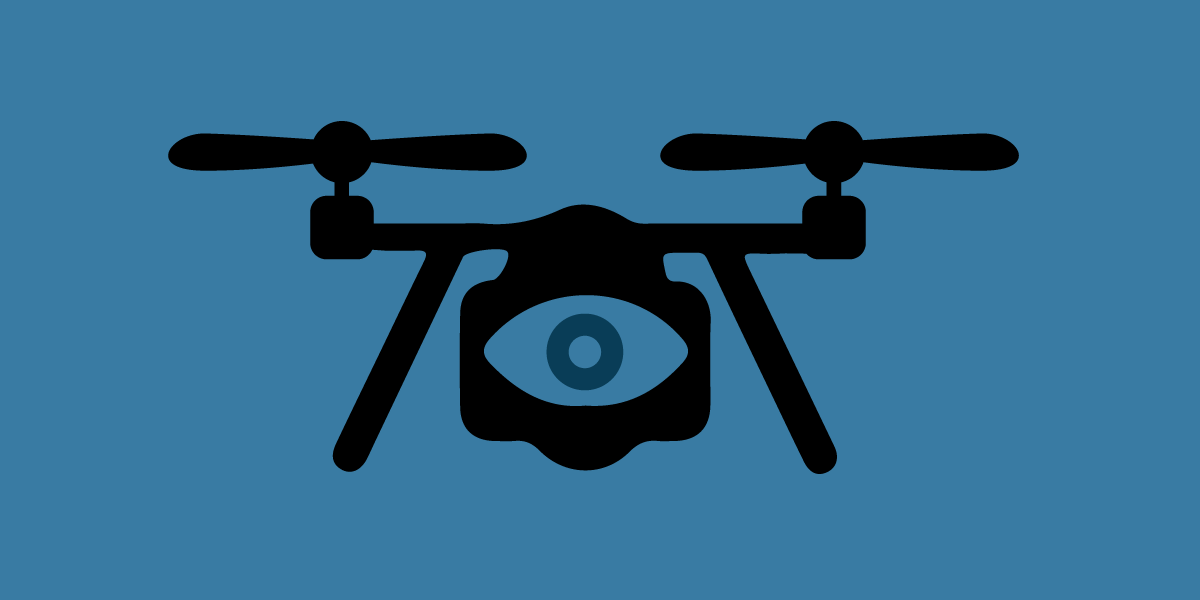
Drones, also known as unmanned aerial vehicles (UAVs), are remote-controlled flying devices that can be used to surveil crowds from above or locations that would otherwise be difficult or dangerous to observe by a human on the ground. On many campuses, drones are purchased for research purposes, and it’s not unusual to see a quadrotor (a drone with four propellers) buzzing around the quad. However, campus police have also purchased drones for surveillance and criminal investigations.
Our data, which was based on a study conducted by the Center for the Study of The Drone at Bard College, identified 10 campus police departments that have drones:
- California State Monterey University Police Department
- Colorado State University Police Department
- Cuyahoga Community College Police Department
- Lehigh University Police Department
- New Mexico State University Police Department
- Northwest Florida State College Campus Police Department
- Pennsylvania State University Police Department
- University of Alabama, Huntsville Police Department
- University of Arkansas, Fort Smith Police Department
- University of North Dakota Police Department
One of the earliest campus drone programs originated at the University of North Dakota, where the campus police began deploying a drone in 2012 as part of a regional UAV unit that also included members of local police and sheriffs’ offices. According to UnmannedAerial.com, the unit moved from a “reactive” to a “proactive” approach in 2018, allowing officers to carry drones with them on patrol, rather than retrieving them in response to specific incidents.
The Northwest Florida State University Police Department was notable in acquiring the most drones. While most universities had one, NFSU police began using four drones in 2019, primarily to aid in searching for missing people, assessing traffic accidents, photographing crime scenes, and mapping evacuation routes.
The New Mexico State University Police Department launched its drone program in 2017 and, with the help of a local Eagle Scout in Las Cruces, built a drone training facility for local law enforcement in the region. In response to a local resident who questioned on Facebook whether the program was unnerving, a NMSU spokesperson wrote in 2019:
[The program] thus far has been used to investigate serious traffic crashes (you can really see the skid marks from above), search for people in remote areas, and monitor traffic conditions at large events. They aren’t very useful for monitoring campus residents (even if we wanted to, which we don’t), since so many stay inside.
Not all agencies have taken such a limited approach. The Lehigh University Police Department acquired a drone in 2015, and equipped it with a thermal imaging camera. Police Chief Edward Shupp told a student journalist at The Brown and Right that the only limits on the drone are Federal Aviation Administration regulations, that there are no privacy regulations for officers to follow, and that the department can use the drones “for any purpose” on and off campus.
Even when a university police department does not have its own drones, it may seek help from other local law enforcement agencies. Such was the case in 2017, when the University of California Berkeley Police Department requested drone assistance from the Alameda County Sheriff’s Office to surveil protests on campus.
Automated License Plate Readers
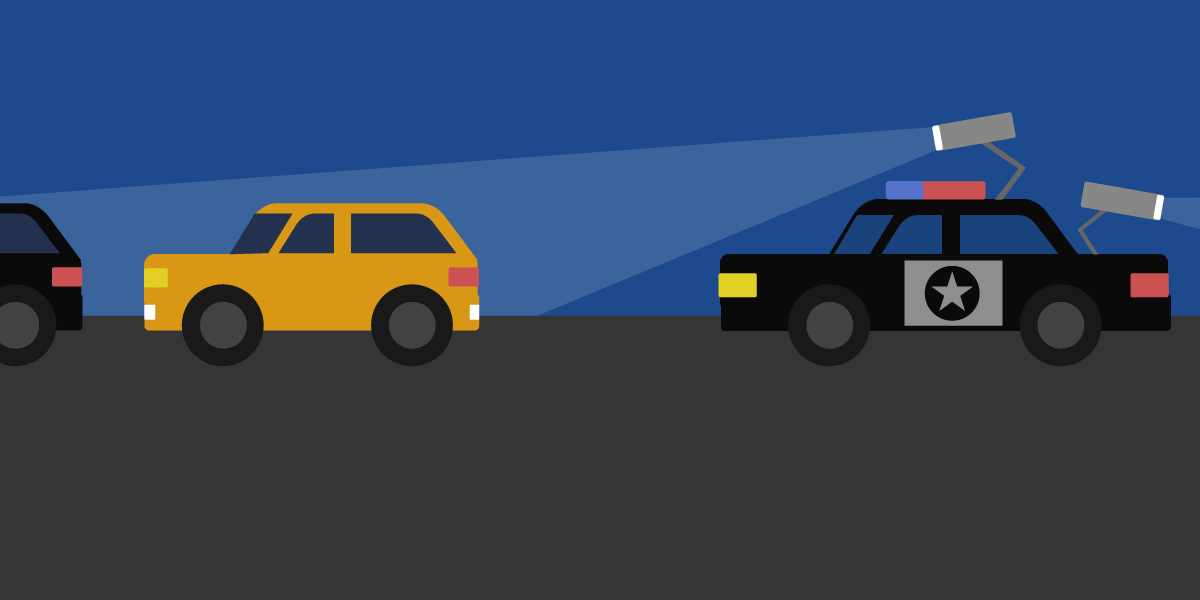
Students and faculty may complain about the price tag of parking passes, but there is also an unseen cost of driving on campus: privacy.
Automated license plate readers (ALPRs) are cameras attached to fixed locations or to security or parking patrol cars that capture every license plate that passes. The data is then uploaded to searchable databases with the time, date, and GPS coordinates. Through our research, we identified ALPRs at 49 universities and colleges throughout the country.
ALPRs are used in two main capacities on college campuses. First, transportation and parking divisions have begun using ALPRs for parking enforcement, either attaching the cameras to parking enforcement vehicles or installing cameras at the entrances and exits to parking lots and garages. For example, the University of Connecticut Parking Services uses NuPark, a system that uses ALPRs to manage virtual permits and citations.
Second, campus police are using ALPRs for public safety purposes. The Towson University Police Department in Maryland, for example, scanned over 3 million license plates using automated license plate readers in 2018 and sent that data to the Maryland Coordination and Analysis Center, a fusion center operated by the Maryland State Police. The University has a total of 6 fixed ALPR sites, with 10 cameras and one mobile unit.
These two uses are not always separate: in some cases, parking officials share data with their police counterparts. At Florida Atlantic University, ALPRs are used for parking enforcement, but the police department also has access to this technology through their Communications Center, which monitors all emergency calls to the department, as well as fire alarms, intrusion alarms, and panic alarm systems. In California, the San Jose/Evergreen Community College District Police Department shares ALPR data with its regional fusion center, the Northern California Regional Intelligence Center.
Social Media Monitoring
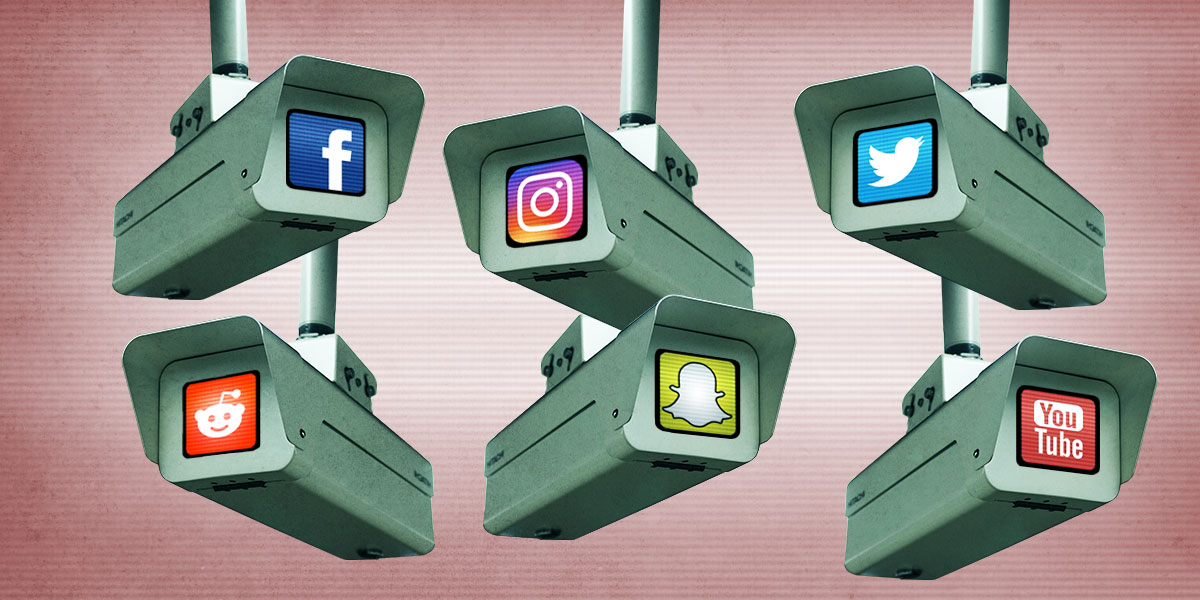
Colleges and universities are also watching their students on social media, and it is not just to retweet or like a cute Instagram post about your summer internship. Campus public safety divisions employ social media software, such as Social Sentinel, to look for possible threats to the university, such as posts where students indicate suicidal ideation or threats of gun violence. We identified 21 colleges that use social media monitoring to watch their students and surrounding community for threats. This does not include higher education programs to monitor social media for marketing purposes.
This technology is used for public safety by both private and public universities. The Massachusetts Institute of Technology has used Social Sentinel since 2015, while the Des Moines Area Community College Campus Security spent $15,000 on Social Sentinel software in 2020.
 Social media monitoring technology may also be used to monitor students’ political activities. Social Sentinel software was used to watch activists on the University of North Carolina campus who were protesting a Confederate memorial on campus, Silent Sam. As NBC reported, UNC Police and the North Carolina State Bureau of Investigation used a technique called “geofencing” to monitor the social media of people in the vicinity of the protests.
Social media monitoring technology may also be used to monitor students’ political activities. Social Sentinel software was used to watch activists on the University of North Carolina campus who were protesting a Confederate memorial on campus, Silent Sam. As NBC reported, UNC Police and the North Carolina State Bureau of Investigation used a technique called “geofencing” to monitor the social media of people in the vicinity of the protests.
“This information was monitored in an attempt to prevent any potential acts of violence (such as those that have occurred at other public protests around the country, including Charlottesville) and to ensure the safety of all participants,” a law enforcement spokesperson told NBC, adding that investigators only looked at public-facing posts and no records of the posts were kept after the event. However, the spokesperson declined to elaborate on how the technology may have been used at other public events.
Biometric Identification
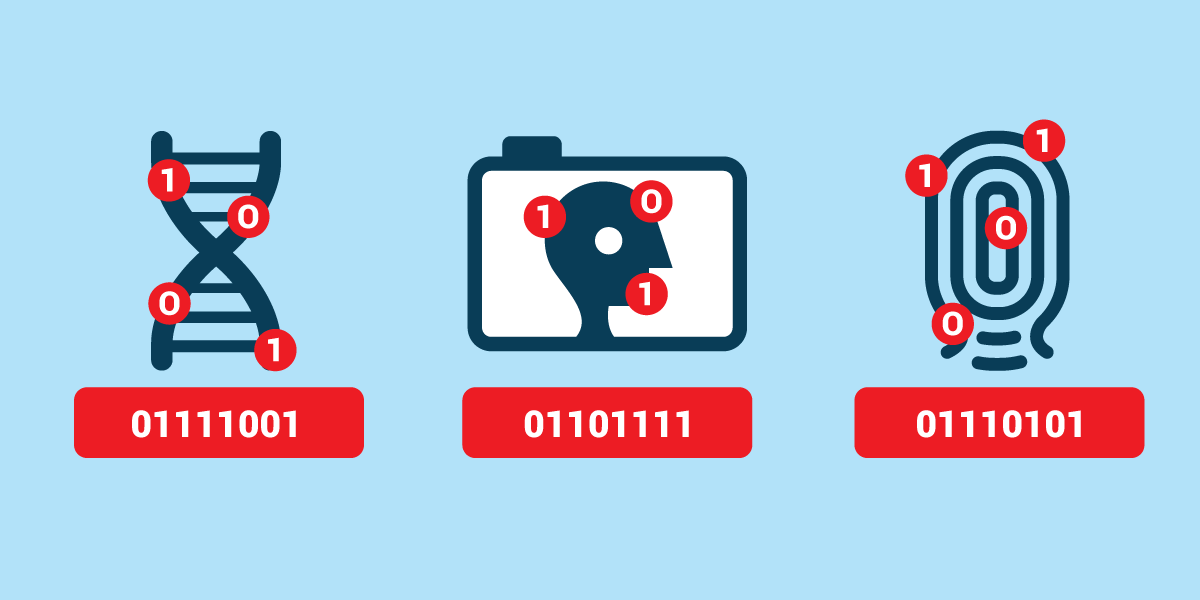
When we say that a student body is under surveillance, we also mean that literally. The term “biometrics” refers to physical and behavioral characteristics (your body and what you do with it) that can be used to identify you. Fingerprints are among the types of biometrics most familiar to people, but police agencies around the country are adopting computer systems capable of identifying people using face recognition and other sophisticated biometrics.
At least four police departments at universities in Florida–University of South Florida, University of North Florida, University of Central Florida, and Florida Atlantic University–have access to a statewide face recognition network called Face Analysis Comparison and Examination System (FACES), which is operated by the Pinellas County Sheriff’s Office. Through FACES, investigators can upload an image and search a database of Florida driver’s license photos and mugshots.
University of Southern California in Los Angeles confirmed to The Fix that its public safety department uses face recognition, however the practice was more prevalent in the San Diego, California area up until recently.
In San Diego, at least five universities and college campuses participated in a face recognition program involving mobile devices. San Diego State University stood out for having conducted more than 180 face recognition searches in 2018. However, in 2019, this practice was suspended in California under a three-year statewide moratorium.
Faces aren’t the only biometric being scanned. In 2017, the University of Georgia introduced iris scanning stations in dining halls, encouraging students to check-in with their eyes to use their meal plans. This replaced an earlier program requiring hand scans, another form of biometric identification.
Gunshot Detection
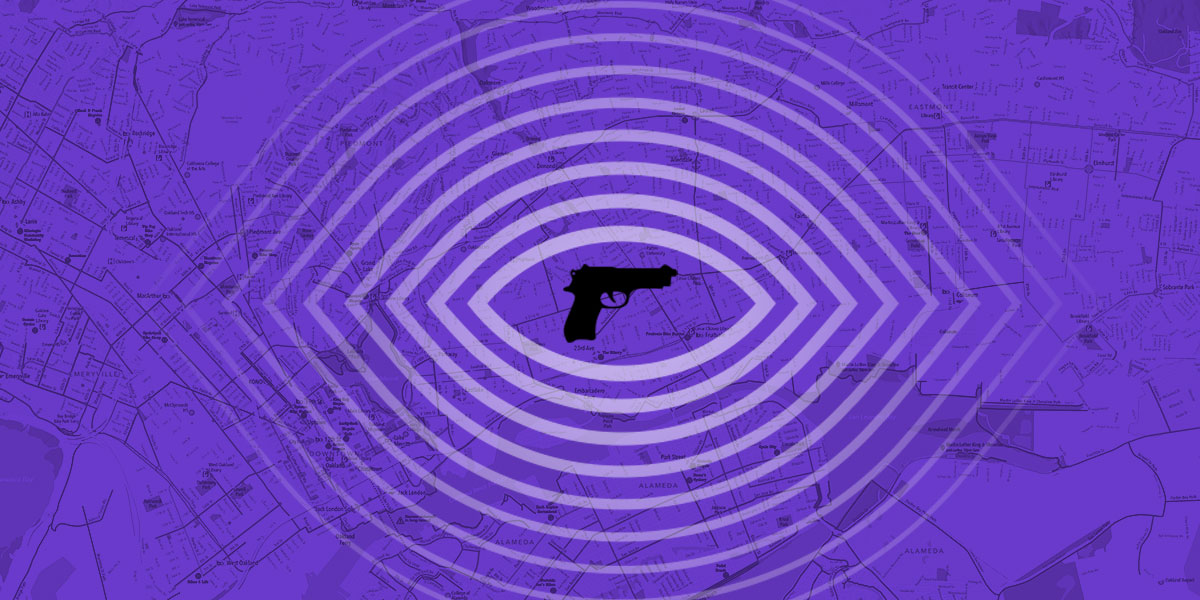
Gunshot detection is a technology that involves installing acoustic sensors (essentially microphones) around a neighborhood or building. When a loud noise goes off, such as a gunshot or a firework, the sensors attempt to determine the location and then police receive an alert.
Universities and colleges have begun using this technology in part as a response to fears of campus shootings. However, these technologies often are not as accurate as their sellers claim and could result in dangerous confrontations based on errors. Also, these devices can capture human voices engaged in private conversations, and prosecutors have attempted to use such recordings in court.
Our dataset has identified eight universities and colleges that have purchased gunshot-detection technology:
- East Carolina University Police Department
- Hampton University Police Department
- Truett McConnell University Campus Safety Department
- University of California San Diego Police Department
- University of Connecticut Police Department
- University of Maryland Police Department
- University of West Georgia Police Department
- Georgia Tech Police Department
Some universities and colleges purchase their own gunshot detection technology, while others have access to the software through partnerships with other law enforcement agencies. For example, the Georgia Tech Police Department has access to gunshot detection through the Fūsus Real-Time Crime Center. The University of California San Diego Police Department, on the other hand, installed its own ShotSpotter gunshot detection technology on campus in 2017.
When a university funds surveillance technology, it can impact the communities nearby. For example, University of Nevada, Reno journalism student Henry Stone obtained documents through Nevada’s public records law that showed that UNR Cooperative Extension spent $500,000 in 2017 to install and operate Shotspotter sensors in a 3-mile impoverished neighborhood of Las Vegas. The system is controlled by the Las Vegas Metropolitan Police Department.
Video Analytics

While most college campuses employ some sort of camera network, we identified two particular universities that are applying for extra credit in surveilling students: the University of Miami Police Department in Florida and Grand Valley State University Department of Public Safety in Michigan. These universities apply advanced software to the camera footage—sometimes called video analytics or computer vision—that use an algorithm to achieve round-the-clock monitoring that many officers viewing cameras could never achieve. Often employing artificial intelligence, video analytics systems can track objects and people from camera to camera, identify patterns and anomalies, and potentially conduct face recognition.
Grand Valley State University began using Avigilon video analytics technology in 2018. The University of Miami Police Department uses video analytics software combined with more than 1,300 cameras.
Three university police departments in Maryland also maintain lists of cameras owned by local residents and businesses. With these camera registries, private parties are asked to voluntarily provide information about the location of their security cameras, so that police can access or request footage during investigations. The University of Maryland, Baltimore Police Department, the University of Maryland, College Park Police Department and the Johns Hopkins University Campus Police are all listed on Motorola Solutions’ CityProtect site as maintaining such camera registries.
Two San Francisco schools—UC Hastings School of Law and UC San Francisco—explored leasing Knightscope surveillance robots in 2019 and 2020 to patrol their campuses, though the plans seem to have been scuttled by COVID-19. The robots are equipped with cameras, artificial intelligence, and, depending on the model, the ability to capture license plate data, conduct facial recognition, or recognize nearby phones.
Conclusion
Universities in the United States pride themselves on the free exchange of ideas and the ability for students to explore different concepts and social movements over the course of their academic careers. Unfortunately, for decades upon decades, police and intelligence agencies have also spied on students and professors engaged in social movements. High-tech surveillance only exacerbates the threat to academic freedom.
Around the country, cities are pushing back against surveillance by passing local ordinances requiring a public process and governing body approval before a police agency can acquire a new surveillance technology. Many community colleges do have elected bodies, and we urge these policymakers to enact similar policies to ensure adequate oversight of police surveillance.
However, these kinds of policy-making opportunities often aren’t available to students (or faculty) at state and private universities, whose leadership is appointed, not elected. We urge student and faculty associations to press their police departments to limit the types of data collected on students and to ensure a rigorous oversight process that allows students, faculty, and other staff to weigh in before decisions are made to adopt technologies that can harm their rights.
Source: EFF.org
Become a Patron!
Or support us at SubscribeStar
Donate cryptocurrency HERE
Subscribe to Activist Post for truth, peace, and freedom news. Follow us on Telegram, SoMee, HIVE, Flote, Minds, MeWe, Twitter, Gab and Ruqqus.
Provide, Protect and Profit from what’s coming! Get a free issue of Counter Markets today.
Scholars Under Surveillance: How Campus Police Use High Tech to Spy on Students
